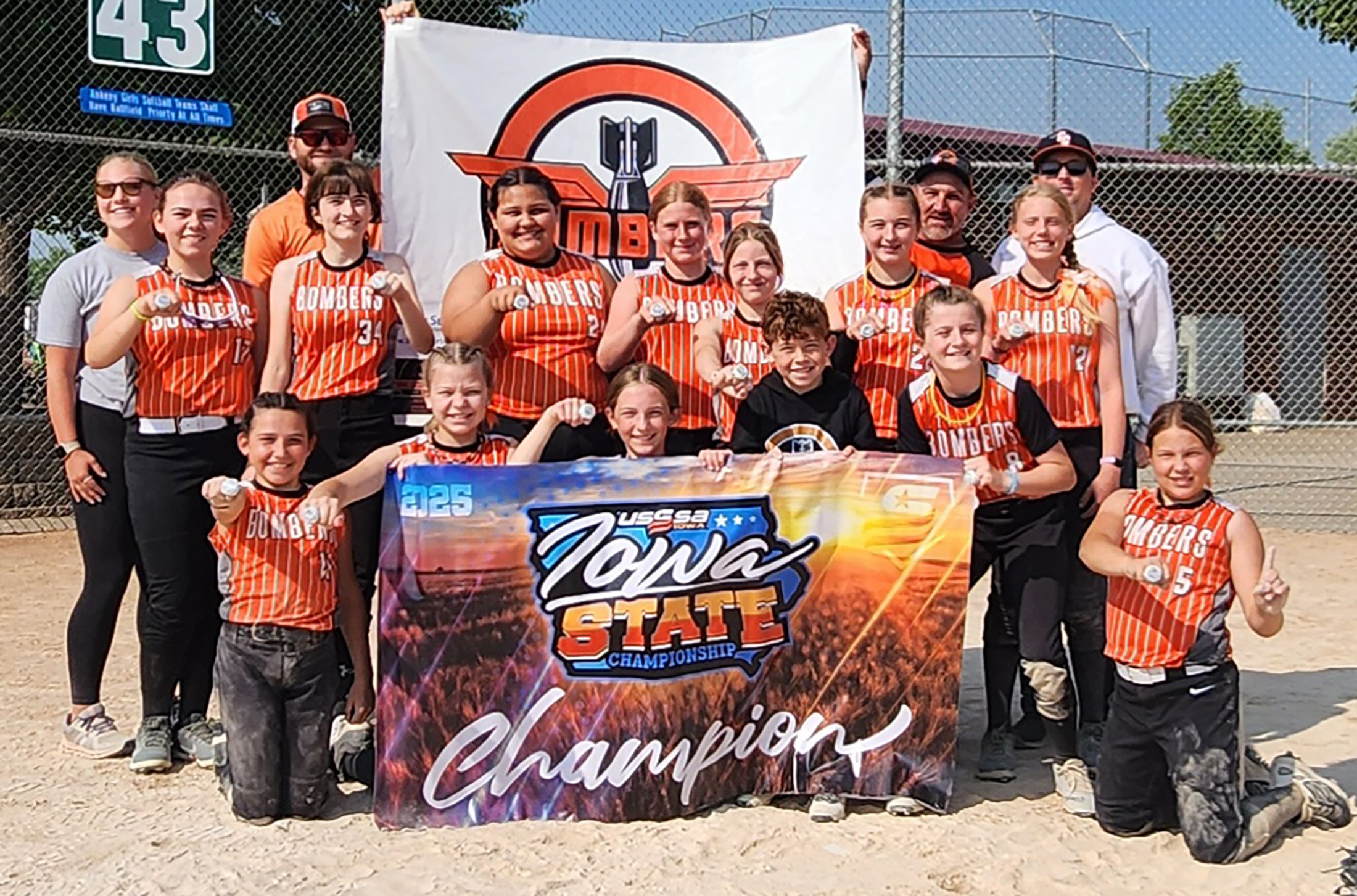Floyd County Medical Center prescription: bleatment treatment for grounds care

By Bob Steenson, bsteenson@charlescitypress.com
It’s not uncommon for a rural critical access hospital like the Floyd County Medical Center to have visiting specialists help fill specific needs. But that tradition went in a whole new direction with the arrival Thursday afternoon of a couple of dozen goats.
The herd of 25 is now munching its way through overgrown weeds, brush and grass on a few areas of hospital property south and west of the Medical Center and clinic.
“It’s not standard, but it’s going to be worth it,” said Todd Fails, director of facilities and materials management at FCMC, when asked if goats are common tools in hospital grounds maintenance.
“Originally we had intended on clearing it out with like a skid loader and brush cutters,” Fails said. “But we looked at doing something that was a little more eco-friendly and had some entertainment value to it. And this fit the bill.”

The goats are coming from Goats on the Go, a northeast Iowa/southern Minnesota regional franchise of a national network of targeted grazing and clearing specialists by the same name.
This particular affiliate is based in Fayette, and owned by Paul Skrade, who is also a science professor and wildlife biologist at Upper Iowa University. His associate in Goats on the Go is Mikel Brown, who is also an Upper Iowa grad student.
“We use Kiko goats,” Skrade explained. “They’re a variety breed that came out of New Zealand … they’ll eat almost anything and they’ve got high parasite resistance, so they’re great for this type of work.”
The goats they use are all females and wethers (neutered males), although Skrade said they brought along some older kids this time, too.
The goats arrived Thursday afternoon and are expected to stick around for about 10 days to two weeks, depending on how quickly they clear their assigned areas.
The patch they are starting on, west of the new parking lot next to the clinic, is the largest area and will take them the most time.
The goats are contained in their target area by electrified fencing, and Skrade and hospital officials cautioned anyone stopping by to see the goats to stay clear of the fence.
Skrade said the goats will stay on the property they are working on 24 hours a day, with water and minerals brought in to supplement the plants they eat.

The goats will eat almost anything, including things that aren’t good for them, so Skrade and Brown walk the property to check for toxic plants before letting their crew loose.
And although they’ll eat almost anything, they do have their preferences, Skrade said. They’ll start by picking out the plants they like the most, finishing those off then going on to their next favorite and so on.
Luckily, some of the plants the goats like best are ones that people want least, with a preference for non-native species like honeysuckle and buckthorn.
“It’s great because they go for a lot of the invasive things that we don’t want in there,” Skrade said.
As far as worries about overeating, the goats are pretty good at self-regulating, he said.
“They’ll have a siesta in the middle of the day when it’s hot and then they’ll kind of eat again into the evening,” Skrade said. “Sometimes we find them middle of the night, they’ll be browsing away doing their thing.”
Fails said the goal is to clear away the undergrowth then take out dead trees and thin other treess, to eventually make the space more inviting – possibly with benches, a walking path for employees and even a garden.
“My ultimate goal is to be able to mow through this, and have it just grass. A place where people can go out and sit under a tree if they want to,” he said.
FCMC staff seemed to be enjoying the novelty visitors Thursday afternoon, wandering out while on breaks to glimpse the goats and pulling out their phones for photos.
“It’s something as simple as coming to look at some goats,” said Makenzie McNeill, director of marketing at the Floyd County Medical Center.
“We’ll definitely encourage staff and patients, visitors, ‘Hey, stop by for a few minutes and get a smile and a laugh watching some goats eat on some leaves,’” McNeill said.












Social Share